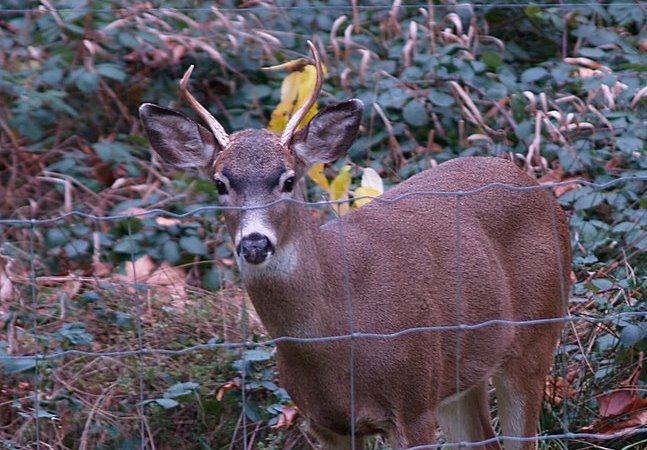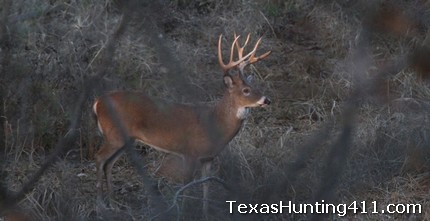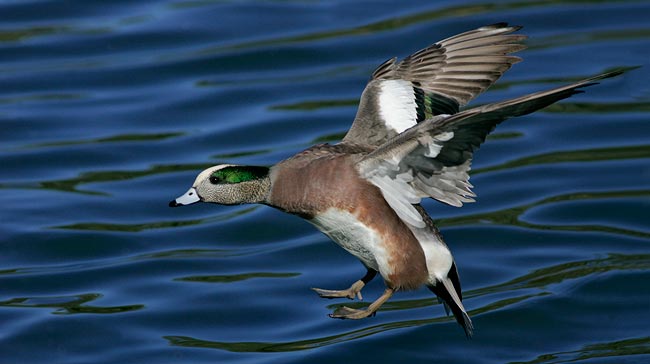Dr. James C. Kroll and Ben H. Koerth of the Institute for White-tailed Deer Management and Research at Stephen F. Austin State University set out to determine if yearling (1.5 years old) spike and three point bucks are actually are inferior to other bucks with four or more antler points. The results could impact deer hunting on private lands across Texas, as well as the rest of the US. So how did these researchers go about getting the data they needed?
They turned to ranch owners in South Texas. One of the first questions the researchers attempted to answer was: “How many spikes and 3-point yearlings are out there and do their numbers change over a period of time?” As of 2006, they captured, marked and released a total of 884 whitetail buck fawns and 1,132 yearlings. Numbered, color-coded ear tags were placed in the ears of each buck along with tattoos in the event the ear tags were lost.

The study began in 1997 and took place on twelve different South Texas ranches over a five-county area. During the following years attempts were made to recapture as many of the previously tagged bucks as possible. Antler measurement data was taken from all of the recaptured bucks as well as the newly captured buck fawns and yearlings each year, and the results were quite dramatic.
Data gathered over an eight year period showed that the number of spikes and 3 point bucks changed significantly from year to year on the same properties. If spike antlers were caused by poor genetics, would these yearly changes have occurred in such short periods of time? “Absolutely not,” Dr. Kroll says. “The overall genetics of a deer herd simply cannot change that fast.”
However, the real meat of this landmark spike buck study goes well beyond the question of how many spikes and 3-pointers are in the herd. “We divided all of the yearling bucks we captured into two categories,” Dr. Kroll continues. “Yearlings that had only spikes or 3-point antlers were in one category, and yearlings with four or more antler points on their first set were in the other. We did this because we reasoned that these two classes of yearling bucks are easy for hunters to identify. We got some very interesting results on the 21⁄2- and 31⁄2-year-old bucks that were recaptured, but the age of 41⁄2 is where the results were the most dramatic.
“Studies repeatedly have shown that whitetail bucks do not reach maturity until four years of age, and by the time the bucks in our study had reached 4 1⁄2, there was no significant difference in any of the antler measurements, no matter what the buck started out with his first year. The antlers were just as wide, just as heavy and had just as many points. Furthermore, there was no significant difference in gross Boone and Crockett (B&C) score for the bucks,” he says.
Many of the bucks that had been yearling spikes had grown 130-inch racks by age 4 1⁄2. Ironically, the average B&C score of all bucks killed across Texas each year is about 131 inches. “It appears from our data that the spikes and 3 point bucks are genetically equal at birth to multi-point yearlings for antler growth potential,” Dr. Kroll concludes. “It just seems to take some deer a little longer to show their capability. The trick is, you have to let them grow up before it becomes obvious. Genetics certainly is an interesting aspect of whitetail management, and fun to debate around the campfire, but genetics is the least important of all the factors leading to the production of quality bucks.”
So should spikes, or, for that matter, any bucks, ever be culled from the herd? According to Dr. Kroll, perhaps in some cases. It seems to be a very complicated issue, and it depends on the deer management goals of each ranch. “In our opinion, instead of trying to cull bucks, landowners and hunters are far better off focusing their attention on things they can do something about, such as deer nutrition.
Today the question of shooting more does is the only issue that generates as much controversy as that of what to do about spike bucks, and that’s a no-brainer for most hunters. We should all do our part in trying to shoot more does. It’s essential for the well being of the deer herd.” Fewer deer on the landscape means more food for the remaining animals and well-fed deer equates to improved whitetail deer hunting for the property owners. Habitat management is one of the most important—but often overlooked—aspects of growing better deer.



